What Are the Best Types of Frames for Art in 2024

When it comes to framing art, the options can feel endless. From wood to metal to acrylic, there are numerous types of frames to choose from. But which one is the best for your specific piece of art?
In this article, we’ll go over the different types of frames and their benefits, so you can make an informed decision when it comes to showcasing your artwork. Understanding the different types of framing available, frame customization, and their respective advantages will help you select the best option to enhance and protect your art.
Wood Frames
The Classic Choice
Wood frames are a timeless choice for framing art. They have been used for centuries and continue to be popular due to their versatility and aesthetic appeal. They come in a variety of styles, from ornate and traditional to sleek and modern. This variety allows you to find a wood frame that perfectly complements your artwork and the decor of the space where it will be displayed.
Benefits
Wood frames offer a traditional and elegant look, making them a popular choice for more formal artwork. They provide a good amount of protection for your artwork as they are sturdy and can withstand bumps and scratches. Additionally, they are available in a range of finishes, including natural wood, painted, and stained, allowing for further customization to match your aesthetic preferences.
Drawbacks
Despite their many advantages, wood frames do have some drawbacks. They can be heavy, which may make them more challenging to hang and transport. Additionally, wood is susceptible to environmental changes, such as humidity and temperature fluctuations, which can cause the frame to warp or yellow over time. Regular maintenance and proper care can mitigate these issues, but it’s something to consider when choosing a wood frame.
Types of Wood Frames
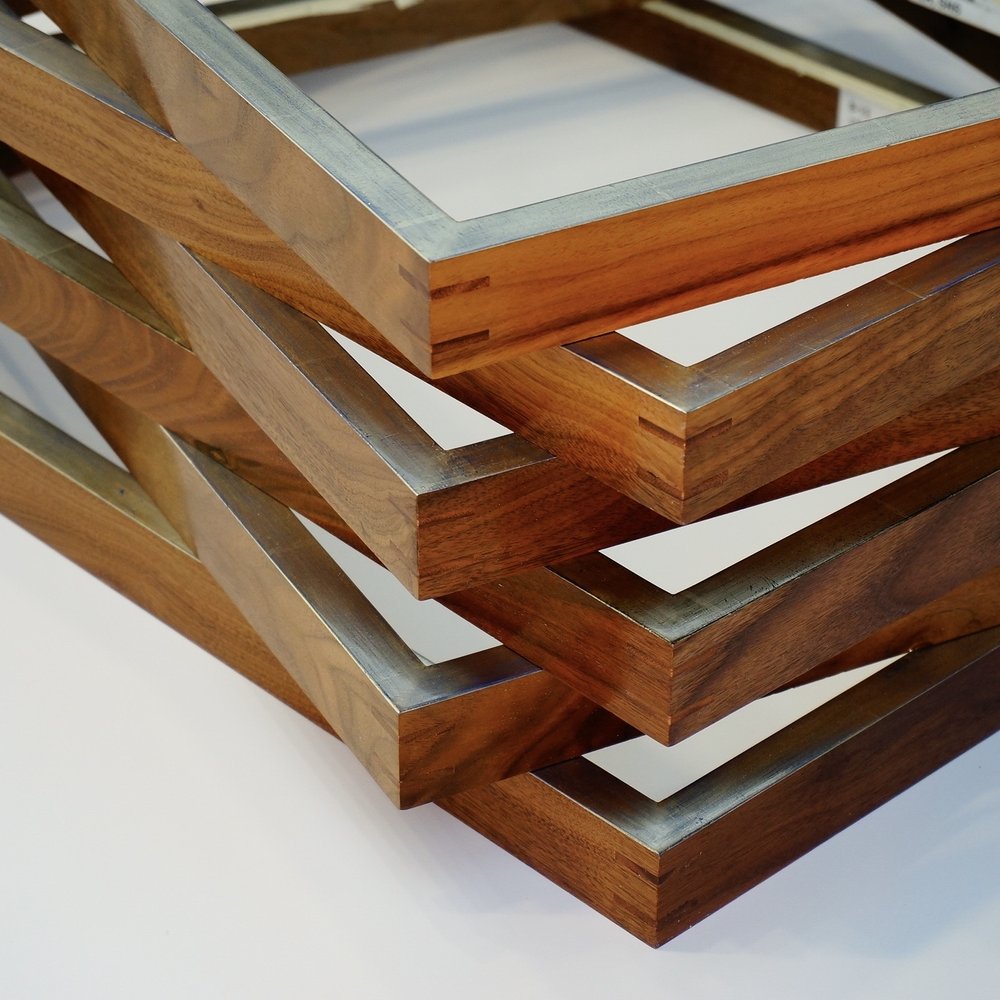
Within the category of wood frames, there are several subtypes, each with its unique characteristics:
- Hardwood: Made from durable woods like oak, maple, and walnut, these are known for their strength and longevity. They are often used for valuable or significant pieces of art.
- Softwood: These, made from woods like pine and cedar, are lighter and generally less expensive than hardwood. They are suitable for a variety of artworks but may not be as durable in the long term.
- Reclaimed Wood: An eco-friendly option, reclaimed wood is made from recycled wood materials. They offer a rustic and unique look, perfect for certain types of art and decor.
Metal Frames
Sleek and Modern
Metal frames are an excellent option for contemporary or modern artwork, offering a sleek and modern look. These are typically made from aluminum or other lightweight metals, making them easy to handle and install. Their minimalist design makes them a popular choice for galleries and modern homes.
Benefits
Metal frames are lightweight, making them easy to hang and transport. They are also resistant to warping and yellowing, ensuring that they maintain their appearance over time. These are available in various finishes, including matte, glossy, and brushed, allowing you to choose a finish that best complements your artwork.
Drawbacks
While metal frames have many benefits, they may not offer as much protection as wood. They can potentially scratch or dent more easily, so they may require more careful handling. Additionally, metal might not provide the same level of aesthetic warmth and richness as wood, which can be a consideration depending on the style of your artwork and decor.
Types of Metal Frames
There are several types to consider, each offering different benefits:
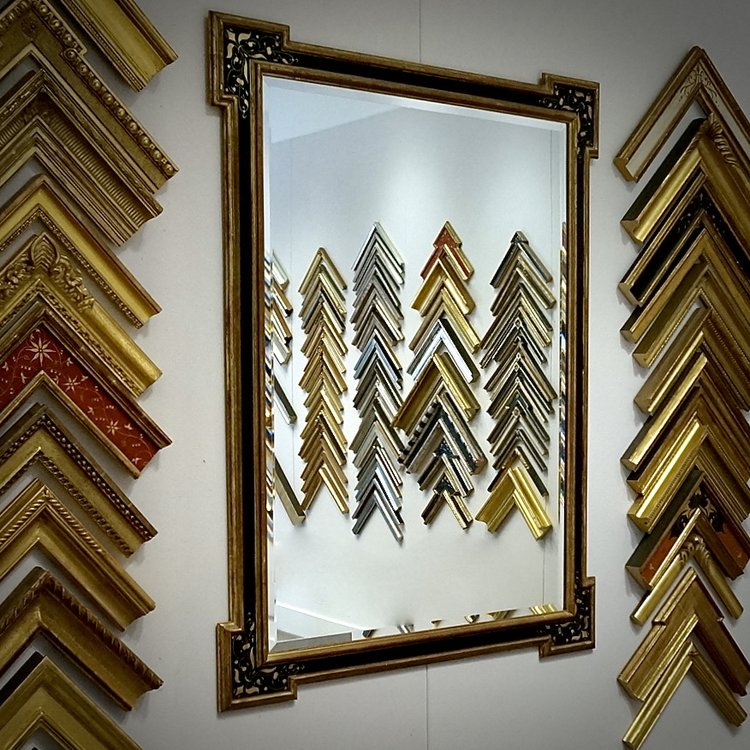
- Aluminum: Lightweight and corrosion-resistant, aluminum is a popular choice for modern and contemporary art. They are available in various colors and finishes.
- Steel: Known for its strength and durability, it is heavier than aluminum but offers a more industrial look. They are ideal for larger or heavier pieces of art.
- Brass: Offering a more luxurious and classic appearance, brass is heavier and typically used for high-end or vintage artworks.
Acrylic Frames
Minimalistic and Versatile
Acrylic frames are another popular choice for framing art. These are made of a clear, plastic material and offer a minimalistic look. They are lightweight and easy to hang, making them a convenient choice for those who frequently change out their artwork.
Benefits
Acrylic frames are shatter-resistant, making them a safe choice for homes with children or pets. They are also more affordable than glass, making them an economical option for framing art. Acrylic is a lightweight material, which makes these easy to handle and install. Additionally, acrylic provides UV protection, helping to preserve your artwork from fading due to sunlight exposure.
Drawbacks
Despite their many advantages, they do have some drawbacks. They may not offer as much protection as wood or metal frames and can potentially scratch or yellow over time. Additionally, while acrylic is shatter-resistant, it is not as durable as glass in terms of long-term clarity and scratch resistance.
Types of Acrylic Frames
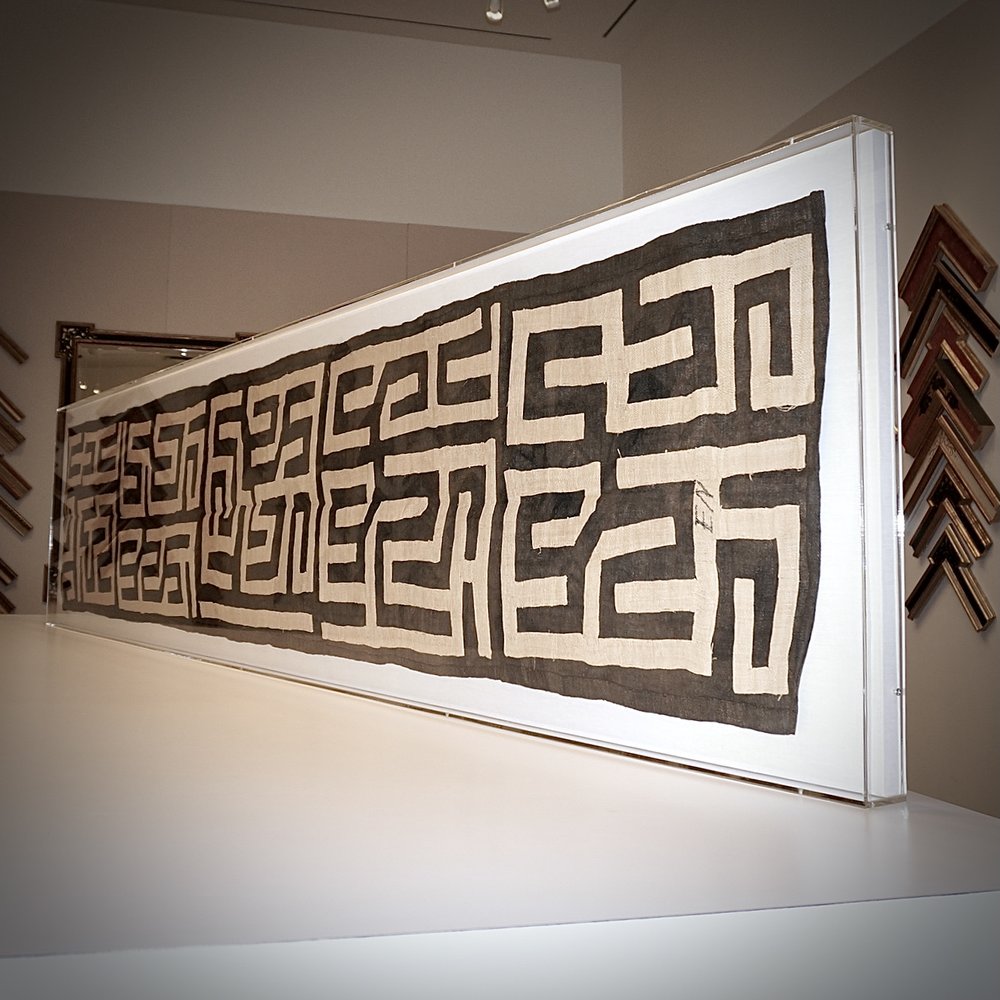
There are several types of acrylic frames available, each suited to different needs:
- Clear Acrylic: These offer a minimalistic and modern look, allowing the artwork to be the main focus. They are ideal for contemporary art and photographs.
- Frosted Acrylic: Providing a more subtle and diffuse appearance, frosted acrylic is suitable for softer, more muted artworks.
- UV-Protective Acrylic: These offer additional protection against UV rays, helping to preserve the colors and details of your artwork over time.
Shadow Box Frames
Depth and Dimension
Shadow box frames are a unique option for framing art. These are typically made of wood or metal and have a deeper depth, allowing for three-dimensional objects to be displayed. Shadow box ones are great for showcasing items such as sports jerseys, medals, or other collectibles.
Benefits
Shadow box frames offer a unique and creative way to display items and provide a good amount of protection for the objects inside. They allow for a more dynamic and interactive presentation of your artwork or memorabilia, adding depth and dimension to the display. Additionally, the shadow box can be customized with various background materials and colors to enhance the presentation of the items inside.
Drawbacks
While shadow box frames offer many benefits, they may be heavier and more expensive than other types of frames. The additional depth and materials used in shadow box frames contribute to their higher cost and weight. Additionally, they may require more complex installation and maintenance compared to standard.
Types of Shadow Box Frames
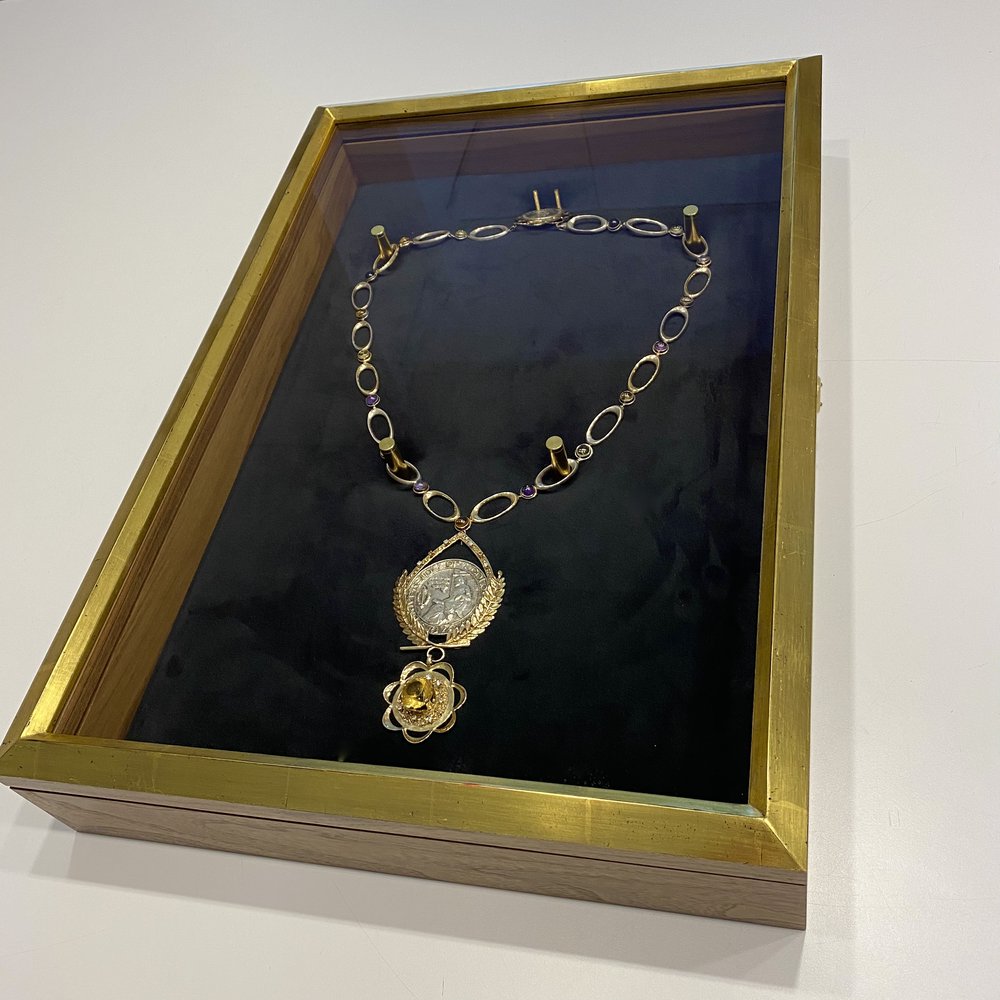
There are several types of shadow box frames to consider, each offering different benefits:
- Traditional Shadow Box: Made from wood or metal, these offer a classic and versatile look, suitable for a wide range of items.
- Customized Shadow Box: These are tailored to specific items and can include features such as lighting, custom backgrounds, and unique shapes.
- Floating Shadow Box: Combining the depth of a shadow box with the modern look of a floating frame, these offer a unique way to display three-dimensional items.
Floating Frames
Modern and Sleek
Floating frames are a unique option for framing art. These have a clear acrylic front, allowing the artwork to appear as if it’s floating within the frame. These offer a modern and sleek look and are great for showcasing artwork with interesting edges or textures.
Benefits
Floating frames provide a contemporary and sophisticated appearance, making them ideal for modern and abstract art. They allow the artwork to be the focal point by creating the illusion that it is suspended within the frame. Additionally, they can highlight the unique edges or textures of the artwork, adding to its visual appeal.
Drawbacks
While floating frames offer a modern and sleek look, they may not offer as much protection as traditional ones. The clear acrylic front can potentially scratch or yellow over time, and the open design may expose the artwork to environmental elements. Additionally, they may require more careful handling and maintenance to preserve their appearance.
Types of Floating Frames
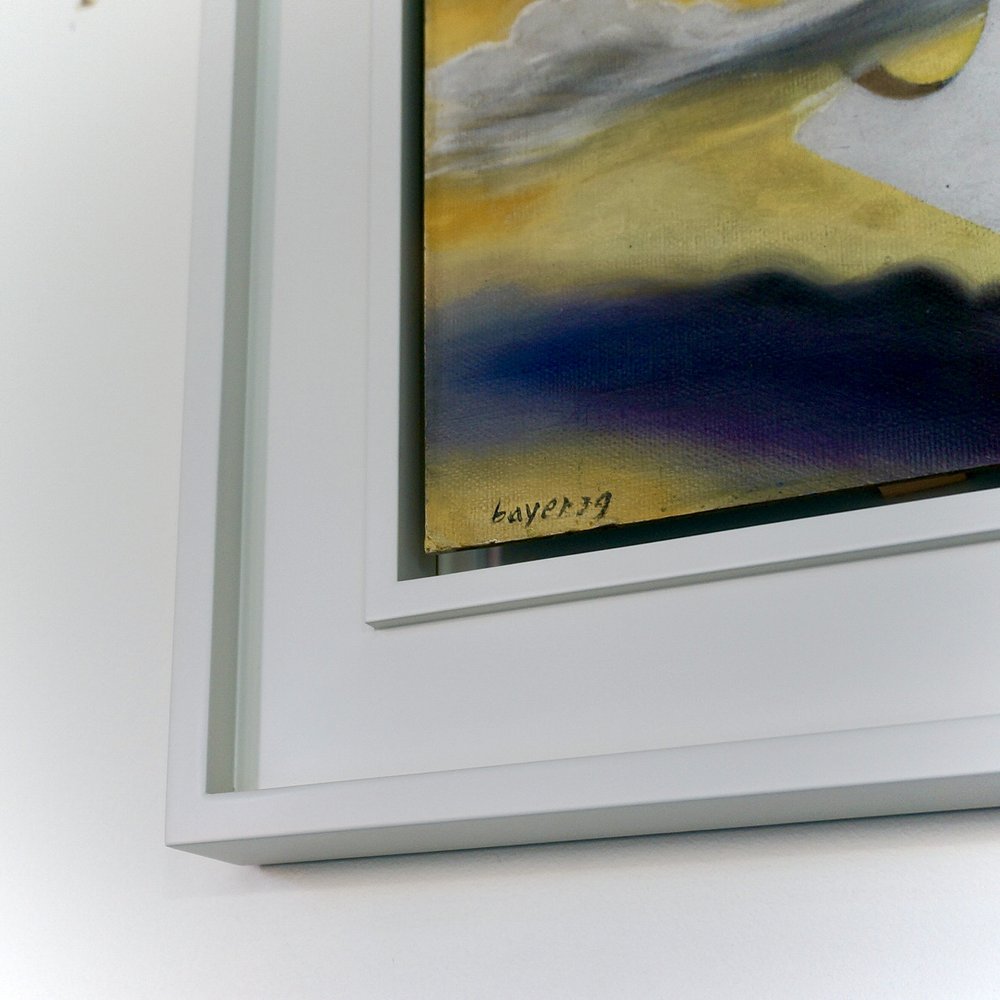
There are several types of floating frames available, each offering different benefits:
- Clear Acrylic Floating: These offer a minimalistic and modern look, ideal for contemporary art and photographs.
- Glass Floating: Providing a more traditional appearance, glass floating offers better clarity and scratch resistance than acrylic.
- Wooden Floating: Combining the natural warmth of wood with the modern look of a floating frame, these are suitable for a wide range of artworks.
Conclusion
In conclusion, the best type of frame for your art will depend on your personal style and the specific needs of your artwork.
- Wood frames offer a traditional and elegant look and provide a good amount of protection.
- Metal frames offer a modern and sleek look and are lightweight.
- Acrylic frames offer a minimalistic look and are shatter-resistant.
- Shadow box frames offer a unique and creative way to display three-dimensional objects.
- Floating frames offer a modern and sleek look and are great for showcasing artwork with interesting edges or textures.
Ultimately, it’s important to consider the specific needs of your artwork and choose a frame that will not only enhance its appearance but also protect it for years to come. You can choose from different types of frames for your art, like wood, metal, acrylic, shadow box, or floating. Each option has its own style and can make your art look great.
Give us a call, and one of our specialists can help you select the right type for your art. Our experts are ready to provide personalized advice and professional framing services to ensure your artwork is beautifully showcased and well-protected.
